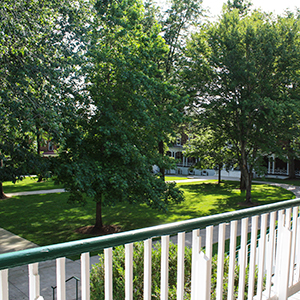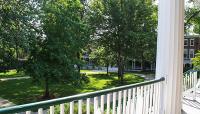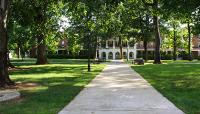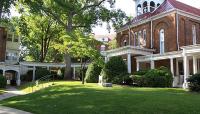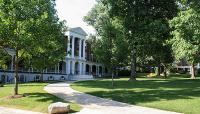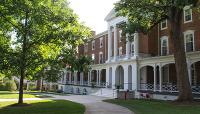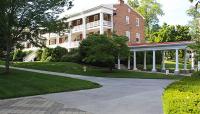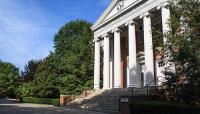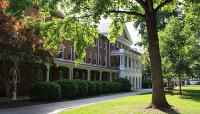Landscape Information
Founded in 1842 as the coeducational Valley Union Seminary, Hollins College became Virginia’s first institution of higher education exclusively for women when its director Charles Cocke changed its status to an all-girls institution in 1852. Constructed on the site of the Botetourt Springs resort established in 1820, Cocke donated his salary to the conversion of the resort into a campus, supplemented in 1855 with a substantial endowment from John and Ann Halsey Hollins. Originally comprising a central greensward and the resort’s hotel, the enclosed Front Quadrangle evolved slowly between 1856 and 1908. Developed without a master plan, the result is a unique assemblage of mid-nineteenth to early-twentieth century collegiate architecture, unified through use of similar building materials, size, and massing.
Framed on all sides by inwardly focused, multi-story brick buildings fronted by white verandas, many of which are connected by freestanding colonnades, the quadrangle courtyard is characterized by an open lawn and mature plantings of canopy trees and understory. Flanked and crossed by concrete walkways, the lawn is punctuated with numerous canopy trees, including ash, oak, maple, tulip poplar, copper beech, southern magnolia, and Carolina hemlock. Four nineteenth century gas lamps and several millstones from nearby abandoned millraces grace the lawn; large specimen boxwood are positioned at strategic places near the buildings and at walk intersections. Listed in the National Register of Historic Places in 1974, the Hollins College Quadrangle lies at the historic core of the 475-acre Hollins University campus.




